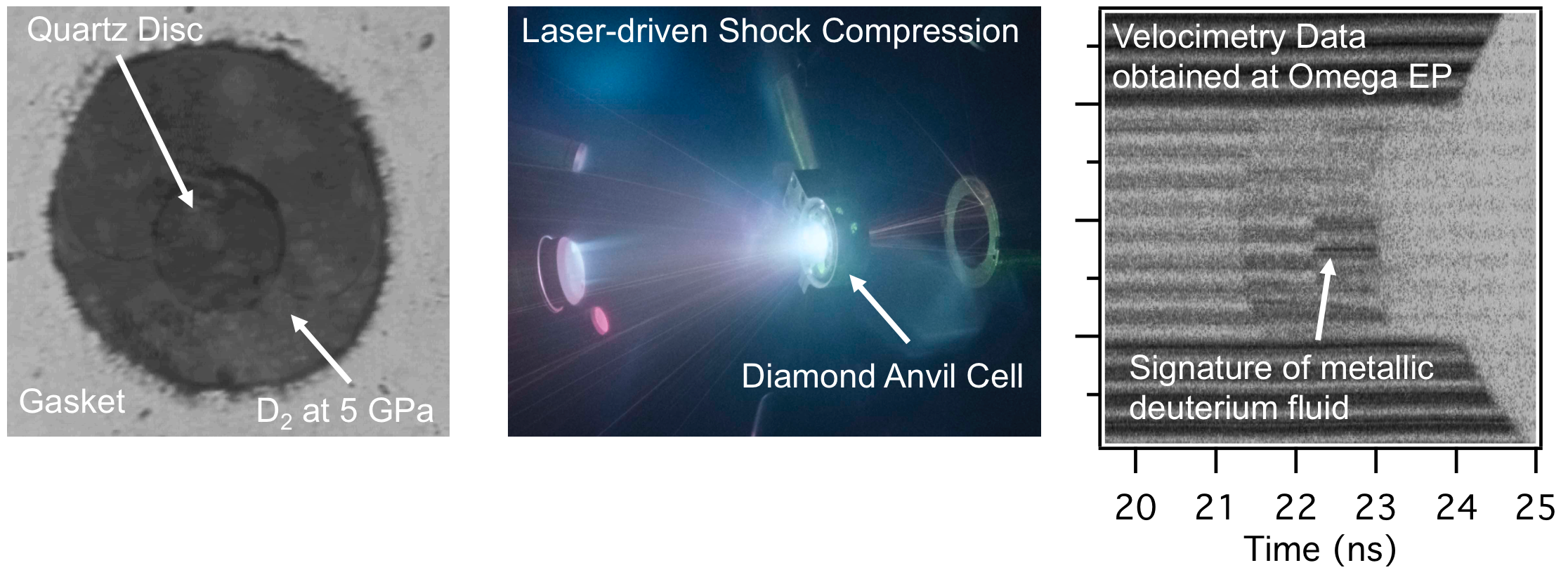Peter Celliers (17-ERD-085)
Executive Summary
Our research aims to explore the fundamental thermodynamic and transport properties of helium to help constrain first-principles numerical simulations methods regarding effects of pressure and temperature on the ionization of warm, dense, low-atomic-number systems. This work is an excellent test bed for first-principles theoretical approaches and supports mission-related research in high-energy-density physics.
Project Description
Our research addresses identifying the pressure–temperature conditions necessary to transform warm dense helium into a conducting metallic fluid. Exploring the fundamental thermodynamic and transport properties of helium is an excellent test bed for first-principles theoretical approaches. We are using ultra-fast optical velocimetry and pyrometry methods to monitor strong shock waves launched by direct laser ablation into diamond-anvil cell targets that contain precompressed helium. We are focusing on highly pre-compressed targets and plan to document the insulator-to-metal transition by monitoring optical reflectivity as a function of shock pressure and temperature.
Our project has two well-defined goals: to pressurize helium to 10 GPa in laser-shock targets and to reduce photo-ionization significantly to obtain good-quality optical velocimetry and pyrometry measurements. If this project is successful, the new data we collect would help constrain first-principles numerical simulation methods regarding the effects of pressure and temperature on the ionization of warm, dense, low-atomic-number systems. These results would have a broad impact on basic condensed-matter and plasma-physics theory, as well as planetary science and astrophysics.
Mission Relevance
Our research supports the NNSA goal of advancing the science, technology, and engineering competencies that are at the foundation of their mission, and supports the DOE objective of delivering scientific discoveries and tools that transform our understanding of nature and strengthening the connection between advances in fundamental science and technology innovation. The project is relevant to the Laboratory’s high-energy-density science core competency of innovative high-energy-density projects in support of Livermore missions.
FY17 Accomplishments and Results
During the three-month period of FY17 since this project was funded, we (1) began preparations for two campaigns at the 60-beam OMEGA laser and the OMEGA Extended Performance laser facilities at the University of Rochester’s Laboratory for Laser Energetics; and (2) prepared for testing the optimized target designs for the campaigns, which will provide the first experimental tests of our diamond anvil cell optimizations.
   






